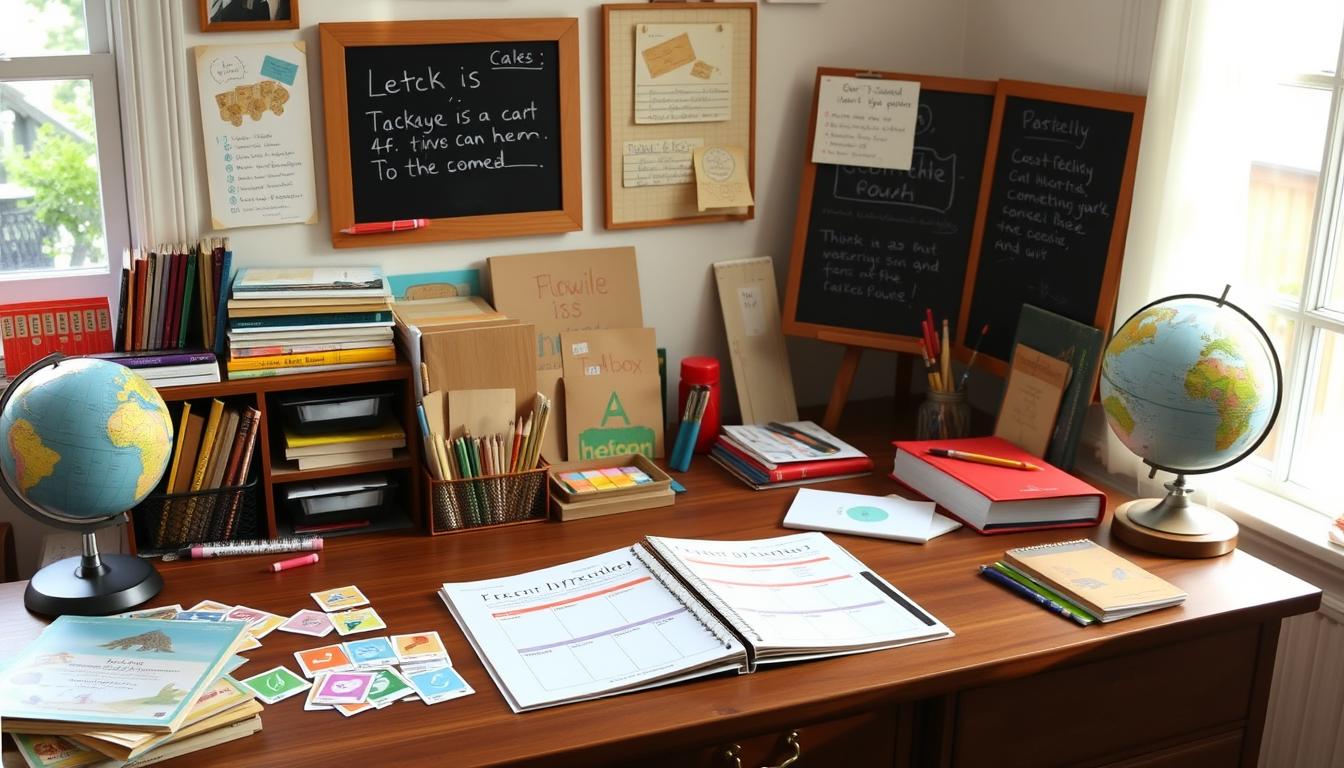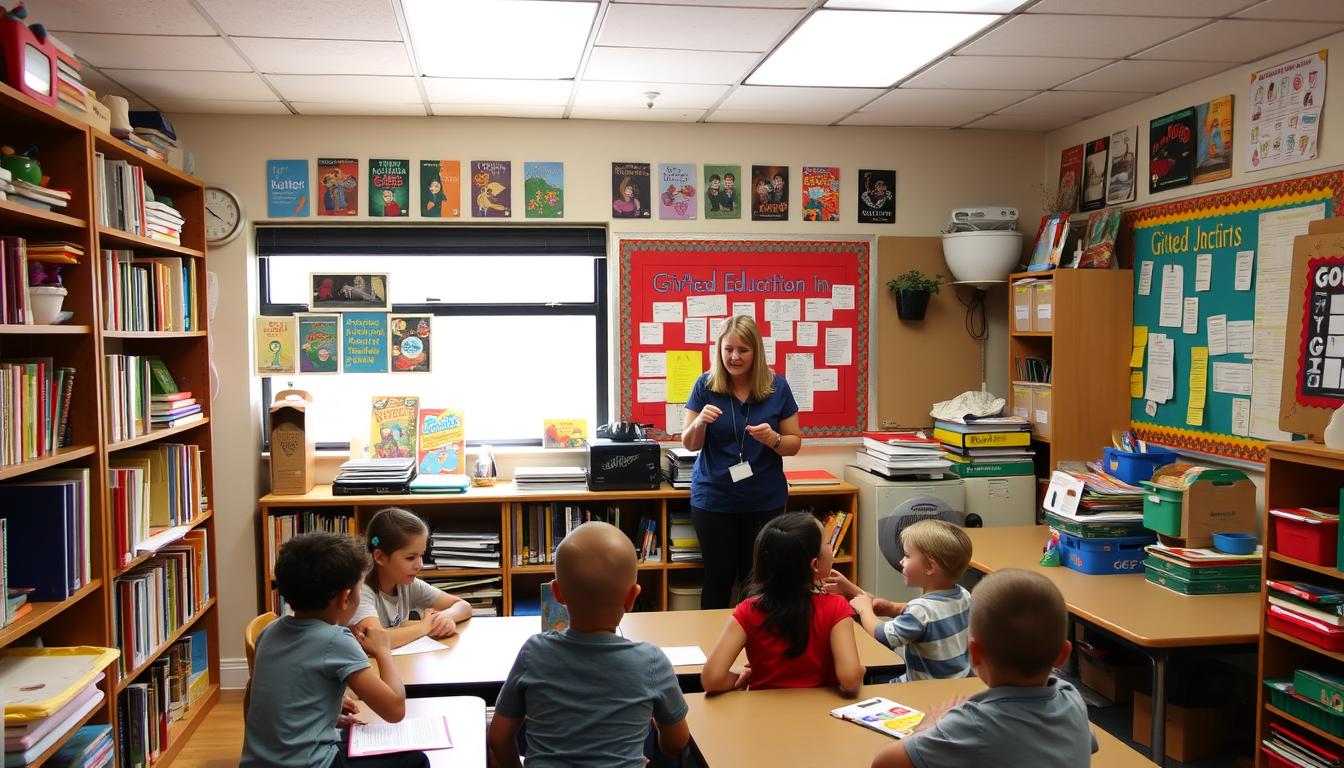The homeschooling movement is growing fast in Australia. More parents want to make a curriculum that fits their kids’ learning needs. This guide shows you how to make a homeschool curriculum that meets Australian standards. It helps parents give their kids a fun and engaging learning experience.
Key Takeaways
- Discover the fundamentals of homeschool curriculum design
- Understand the core educational standards in Australia
- Learn to set educational goals and objectives for your child
- Explore essential tools and resources for creating a custom curriculum
- Discover how to incorporate Australian educational standards into your homeschool curriculum
Understanding the Fundamentals of Homeschool Curriculum Design
Creating a good homeschool curriculum is key to a successful learning path. As homeschooling parents, knowing the core educational standards in Australia is vital. You need to make a curriculum that fits your child’s special needs. By focusing on the main parts of a good curriculum and setting clear goals, you can make a curriculum that helps your child grow intellectually and personally.
Core Educational Standards in Australia
The Australian Curriculum, Assessment and Reporting Authority (ACARA) sets out the main learning areas and standards for school. These guidelines help you build a homeschool curriculum that meets national education goals. By following these standards, you ensure your child gets a well-rounded education that prepares them for the future.
Key Components of an Effective Curriculum
A good homeschool curriculum includes many educational materials and methods. These can be:
- Structured Lesson Plans: Detailed plans for daily or weekly learning activities.
- Hands-on Learning Experiences: Fun, interactive activities that help solidify concepts.
- Varied Learning Resources: Books, online platforms, educational apps, and more.
- Assessments and Evaluations: Regular tests, projects, and observations to check progress and find areas for improvement.
By using these components, you can make a custom learning experience that fits your child’s learning style and needs.
Setting Educational Goals and Objectives
It’s important to set clear educational goals and objectives for your homeschool curriculum. Think about your child’s strengths, interests, and areas for growth. Then, make specific, measurable, and achievable learning targets. These can be academic goals, personal development targets, or practical skills. By aligning your curriculum with these objectives, you ensure your child’s education is focused and tailored to their needs.
“The key to successful homeschooling is creating a curriculum that nurtures your child’s natural curiosity and supports their unique educational journey.”
Essential Tools and Resources for Creating Your Custom Curriculum
As an Australian homeschooling parent, you get to make a curriculum that fits your child perfectly. We’ve gathered key tools and resources to help you craft a custom curriculum.
Discover Engaging Homeschooling Resources
Check out a variety of educational materials to make your homeschooling curriculum exciting. You’ll find everything from interactive digital tools to hands-on kits. These resources support self-paced learning and keep your child interested.
- Online educational platforms with self-paced modules
- Engaging educational apps and digital learning tools
- High-quality workbooks, textbooks, and learning guides
- Hands-on STEM kits and project-based learning materials
Leverage Effective Teaching Methods
Use proven teaching methods to make learning fun and effective for your child. Techniques like the Montessori method and project-based learning can make your curriculum dynamic and tailored.
- Learn about the Montessori approach and its benefits
- Use project-based learning for practical applications
- Try the Charlotte Mason method for a nature-focused curriculum
- Explore the Waldorf philosophy for a creative focus
Embrace the Power of Self-Paced Learning
Let your child take charge of their learning with self-paced strategies. This method lets them learn at their own speed, building a love for learning and independence.
| Self-Paced Learning Strategies | Benefits |
|---|---|
| Individualised learning plans | Match your child’s learning style and interests |
| Flexible scheduling and pacing | Let your child learn at their own pace |
| Personalized feedback and assessment | Give tailored guidance and support |
By using these tools, resources, and methods, you’ll create a fun and engaging learning space for your child. Homeschooling offers flexibility and personalisation, helping your child grow and succeed.
Learn How To Make Homeschool Curriculum: Step-by-Step Approach
Creating a homeschool curriculum is rewarding and empowering. It lets you tailor education to your child’s unique learning style. This way, you can make a homeschool program that meets their educational needs perfectly.
Identifying Your Child’s Learning Style
The first step is to figure out your child’s learning style. Do they learn best with visual aids or through listening? Knowing this helps you create lesson plans that play to their strengths.
Mapping Out Subject Areas
Next, plan the subjects you’ll cover. Align these with Australian educational standards. This ensures your child gets a well-rounded education that meets key benchmarks. Include core subjects, practical skills, and extracurricular activities for a balanced program.
Creating Assessment Methods
Tracking your child’s progress is key. Use quizzes, projects, and presentations to assess their learning. This helps you see where they need help and understand their learning style better.
By following these steps, you can make a best homeschool program for your child. It will be tailored to their needs and meet Australian educational standards.
| Learning Style | Preferred Instructional Methods |
|---|---|
| Visual | Diagrams, charts, videos, demonstrations |
| Auditory | Lectures, discussions, audio recordings |
| Kinesthetic | Hands-on activities, experiments, field trips |
Incorporating Australian Educational Standards into Your Curriculum
Choosing the best homeschool curriculum australia means aligning it with Australian standards. This ensures your child gets a top-notch education that meets national goals. By using the core curriculum, you open up a world of great homeschool curriculum and educational materials for your family.
First, learn about the Australian Curriculum’s key parts. It covers subjects like English, Maths, Science, and more. Knowing these subjects helps you create a full best homeschool curriculum australia.
Also, look into the content and standards for each subject. This helps you make lesson plans and tests that match national levels. This way, you know your child is getting a quality education.
TO WATCH THE VIDEO CLICK HERE
Using Australian educational standards in your homeschool opens up many resources. You’ll find online and published materials that fit the national curriculum. This makes homeschooling easier and more effective.
By following Australian standards, you make a best homeschool curriculum australia for your child. It meets their needs and prepares them for future success, both at home and in school.
Customising Learning Materials for Different Age Groups
Creating a great homeschool top homeschooling curriculum means knowing your child’s learning needs well. As they grow, their skills and interests change. This makes it important to tailor their learning and education.
We’ll look at how to adjust your curriculum for primary and secondary school students. We’ll also talk about adding advanced learning for gifted students.
Primary School Level Adaptations
At primary school, focus on building a strong base in key subjects. Make learning fun with hands-on activities and interactive tools. Use multimedia to keep young minds engaged.
Make sure the material is at the right level for your child. This helps them understand and feel confident.
Secondary School Level Considerations
Secondary school students need more specialized learning. Teach them to think critically, solve problems, and do research on their own. Introduce harder subjects and let them apply what they learn in real life.
Work with your child to make the curriculum fit their interests and future goals.
Advanced Learning Integration
For gifted or advanced learners, add enrichment activities and harder content. Give them challenging projects and advanced electives. Let them study independently and follow their passions.
By customizing your top homeschooling curriculum, you create a learning space that supports your child’s growth. This helps them succeed in their tailored education.
Technology Integration and Digital Resources in Home Education
Homeschooling is becoming more popular, and technology is key to a good curriculum. Online learning platforms and educational apps can make learning fun and flexible for your child.
Check out homeschooling resources to see how to add educational materials and self-paced learning to your homeschool. Digital technology can really help your child’s learning journey.
Discover Online Learning Platforms
Many online learning platforms offer interactive lessons and multimedia content for all ages and subjects. These platforms have lots of homeschooling resources that fit into your curriculum. They let your child learn at their own speed.
- Look at Outschool, Udemy, and Skillshare for a wide range of educational materials.
- Use virtual tutoring for extra help and personal attention.
- Try interactive simulations and virtual field trips to make learning exciting.
Embrace Educational Apps and Digital Tools
There are also many educational apps and digital tools to help with homeschooling. Apps for learning languages and math games can make learning fun and self-paced.
- Find apps like Khan Academy, Duolingo, and Prodigy Math for specific subjects.
- Use apps for note-taking, mind-mapping, and digital whiteboards to improve organization and thinking.
- Try tools for creating educational content to boost your child’s creativity and self-expression.
By using technology and homeschooling resources, you can make learning fun and tailored to your child’s needs and interests.
“Technology has the power to transform the homeschooling experience, making it more interactive, adaptive, and personalized than ever before.”
Balancing Academic and Practical Life Skills
Creating a balanced homeschool curriculum is key. It mixes academic subjects with practical life skills. This way, your child learns for both school and life.
Including Real-World Applications
Homeschooling lets you tailor learning to your child’s needs. Add hands-on projects and field trips to make learning fun. This way, your child sees how school applies to real life.
Building Critical Thinking Skills
Teaching your child to think critically is vital. Use lesson plans that promote problem-solving and decision-making. Encourage them to question and think for themselves.
Incorporating Life Skills Education
Teach your child essential life skills too. This includes money management, time organization, and communication. These skills help them face adulthood confidently.
Focus on your child’s overall growth. Aim for a curriculum that prepares them for school and life. This balance makes homeschooling rewarding and empowering.
Evaluating and Adjusting Your Homeschool Curriculum
Creating the best homeschool curriculum is a journey, not a one-time task. Regular checks are key to making sure your child gets the education they need. By looking at how well your curriculum works and making changes, you can tailor learning to help your child reach their best.
Spotting areas for betterment is important. Check your child’s progress, listen to their feedback, and look at test scores. This helps you see what’s working and what needs tweaking. It lets you adjust your teaching, change materials, or add new ones to make your homeschool curriculum better for your child.
Being flexible and adaptable is crucial in curriculum design. As your child grows, their educational needs change. Your homeschool curriculum should too, to keep learning engaging and relevant. By always checking and tweaking, you can make a learning space that sparks curiosity and supports your child’s growth.
FAQ
What are the core educational standards in Australia that I should consider when creating a homeschool curriculum?
When making a homeschool curriculum in Australia, follow the Australian Curriculum. This ensures your child gets a top-notch education that meets national standards.
What are the key components of an effective homeschool curriculum?
A good homeschool curriculum has clear goals and a structured plan. It should also have engaging materials and ways to check how well your child is doing.
How do I set effective educational goals and objectives for my homeschooled child?
Think about what your child needs and likes to learn. Set specific, measurable, achievable, relevant, and timely (SMART) goals. These will guide your teaching and curriculum.
What are some essential tools and resources I should have for creating a custom homeschool curriculum?
For a homeschool curriculum, you’ll need educational materials like textbooks and online platforms. Also, use methods like project-based learning and hands-on activities.
How do I identify my child’s learning style when designing a homeschool curriculum?
Find out if your child learns best visually, through sound, or by doing things. Use what you learn to tailor your teaching to their needs.
How do I ensure my homeschool curriculum aligns with Australian educational standards?
To match your homeschool curriculum with Australian standards, learn about the ACARA curriculum. Make sure to include all the necessary subjects and ways to check learning.
How can I adapt my homeschool curriculum to suit different age groups?
For different ages, use content and methods that fit. Younger students need basic skills, while older ones can handle more complex subjects and thinking exercises.
How can I effectively integrate technology and digital resources into my homeschool curriculum?
Use online platforms, apps, and tools to make your curriculum better. They help with learning at your own pace and offer lots of educational content.
How do I balance academic subjects with practical life skills in my homeschool curriculum?
Make sure your curriculum covers both school subjects and real-life skills. Include practical applications and teach important life skills like money management and problem-solving.
How do I evaluate and adjust my homeschool curriculum to ensure it remains effective?
Check how well your curriculum is working by watching your child’s progress and getting feedback. Be ready to change your curriculum and teaching methods as needed.
TO EXPLORE MORE TOPICS CLICK HERE



